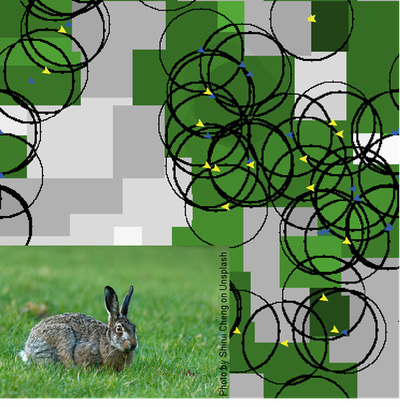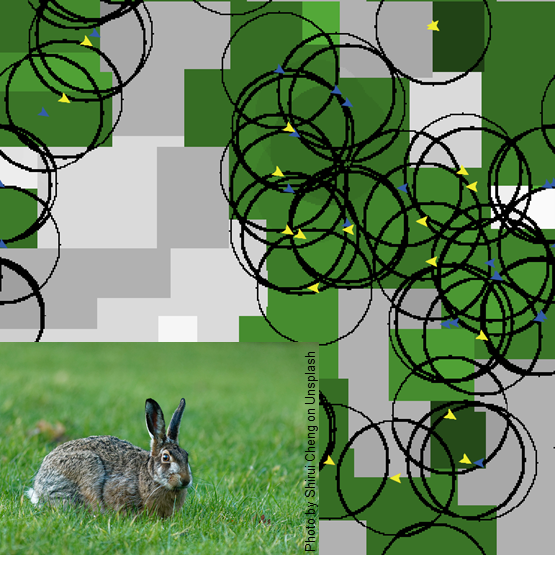Mitigating bioenergy-driven biodiversity decline: a modelling approach with the European brown hare (1.1.0)
The model is designed to analyse the effects of mitigation measures on the European brown hare (Lepus europaeus), which is directly affected by ongoing land use change and has experienced widespread decline throughout Europe since the 1960s. As an input, we use two 4×4 km large model landscapes, which were generated by a landscape generator based on real field sizes and crop proportions and differed in average field size and crop composition. The crops grown annually are evaluated in terms of forage suitability, breeding suitability and crop richness for the hare. Six mitigation scenarios are implemented, defined by a 10 % increase in: (1) mixed silphie, (2) miscanthus, (3) grass-clover ley, (4) alfalfa, (5) set-aside, and (6) general crop richness. The model shows that that both landscape configuration and composition have a significant effect on hare population development, which responds particularly strongly to compositional changes.

Release Notes
The model requires two input files which define the two different agriculatural landscapes which the model is able to represent. The model was evaluated using BehaviorSpace, therefore it does not include any file output.
The GUI includes elements which are guiding the use of the program.
Associated Publications
Langhammer M, Grimm V. Mitigating bioenergy-driven biodiversity decline: a modelling approach with the european brown hare. Submitted to: Ecological Modelling (under revision, Nov 2019)
This release is out-of-date. The latest version is
1.2.0
Mitigating bioenergy-driven biodiversity decline: a modelling approach with the European brown hare 1.1.0
Submitted by
Volker Grimm
Published Dec 10, 2019
Last modified Nov 24, 2020
The model is designed to analyse the effects of mitigation measures on the European brown hare (Lepus europaeus), which is directly affected by ongoing land use change and has experienced widespread decline throughout Europe since the 1960s. As an input, we use two 4×4 km large model landscapes, which were generated by a landscape generator based on real field sizes and crop proportions and differed in average field size and crop composition. The crops grown annually are evaluated in terms of forage suitability, breeding suitability and crop richness for the hare. Six mitigation scenarios are implemented, defined by a 10 % increase in: (1) mixed silphie, (2) miscanthus, (3) grass-clover ley, (4) alfalfa, (5) set-aside, and (6) general crop richness. The model shows that that both landscape configuration and composition have a significant effect on hare population development, which responds particularly strongly to compositional changes.
Release Notes
The model requires two input files which define the two different agriculatural landscapes which the model is able to represent. The model was evaluated using BehaviorSpace, therefore it does not include any file output.
The GUI includes elements which are guiding the use of the program.

